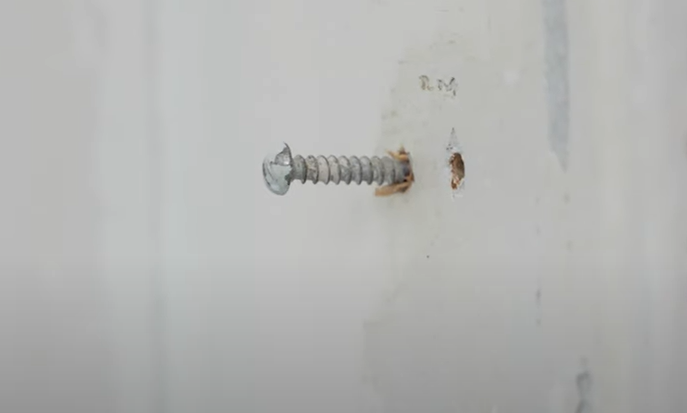

How to Tackle Stripped-Out Holes
Have you ever encountered a stripped-out screw hole, especially in high-stress areas like doors, coat hooks, or other fixtures? This issue is more common than you'd think, and while it might seem like a minor problem, it can leave you with loose or unmounted hardware. But fear not! Here are the two solutions that our resident expert Jerry Vargo recommends.
Traditional Fix: Larger Screws
One of the first solutions many people consider is to simply replace the original screw with a larger one. The idea here is that a bigger screw will be able to bite into the surrounding material and stay secure. However, this option isn’t always feasible. If the hole is too large or you don’t want to make the fixture look awkward with an over-sized screw, you might need another alternative.
Enter the Toothpick Method
The toothpick method is a tried-and-true technique that offers a simple and cost-effective way to fix a stripped screw hole. Here’s how it works:
Gather Your Materials : You’ll need toothpicks (the plain wooden kind work best) and some wood glue.
Apply the Glue : Start by dipping a few toothpicks into wood glue. The glue helps bond the toothpicks to the wood and ensures they hold their position once inserted.
Insert the Toothpicks : Break the toothpicks to the right length and insert them into the stripped screw hole. You want to pack the hole tightly, so make sure there’s no extra space.
Let the Glue Dry : Allow the glue to set for about 24 hours. This ensures the toothpicks and glue bond properly to the surrounding wood and give the screw hole the structure it needs.
Screw It In : Once the glue has dried, you can insert the original screw (or a new one if needed) into the hole. The toothpicks will create a new base for the screw to grip, just like the original threads would have.
Why It Works
The toothpick method works because the wood glue bonds the toothpicks securely inside the stripped hole, creating a tight, reinforced area for the screw to grip. The glue not only helps the toothpicks stay in place but also adds additional strength to the area, preventing the screw from slipping out again.
This method is particularly useful for wooden surfaces, but it can also work on some softer materials. It’s a great solution for everyday DIY projects around the home, especially when you don’t have access to specialized tools or materials.
Give It a Try!
If you're dealing with a stripped screw hole, don’t stress – the toothpick method is a quick, easy, and effective way to get your screws back in place. Whether you're fixing a door, a coat hook, or any other fixture, this simple trick can save you time and money, helping you get back to enjoying a sturdy, secure installation.
For a step-by-step guide on this technique, check out the YouTube video linked below.

